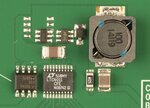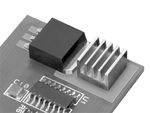Easy peasy
Advanced Member level 6

Unless you have a 200MHz scope and high quality scope probes - you may not see the true rise and fall times - have you calibrated your probes? - via the 5V square wave on the scope
Fet temp rise is very heatsink dependent - and air flow dependent - 60-65 C on the fets is usually regarded as a good result at full power ...
- - - Updated - - -
else - that is the best the chip can do -
Fet temp rise is very heatsink dependent - and air flow dependent - 60-65 C on the fets is usually regarded as a good result at full power ...
- - - Updated - - -
else - that is the best the chip can do -





